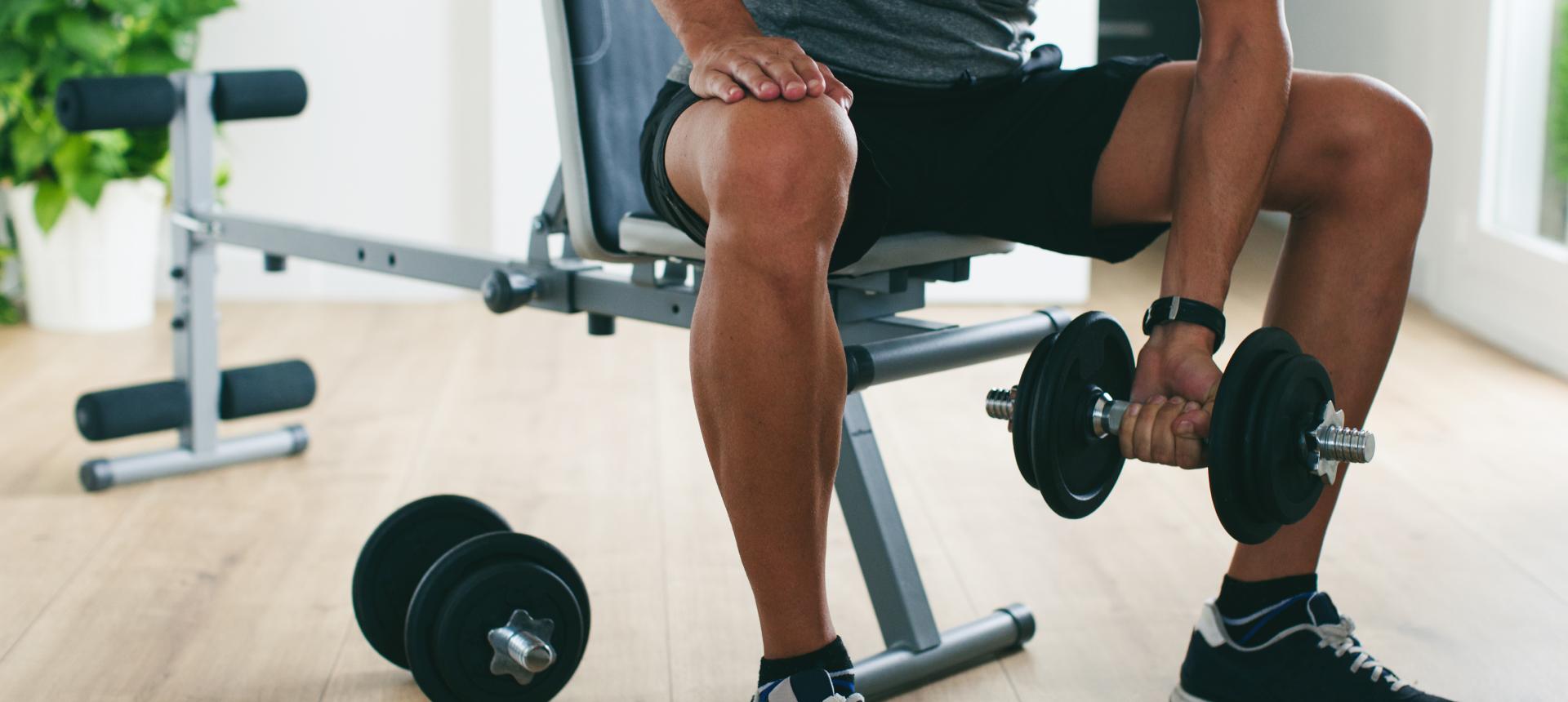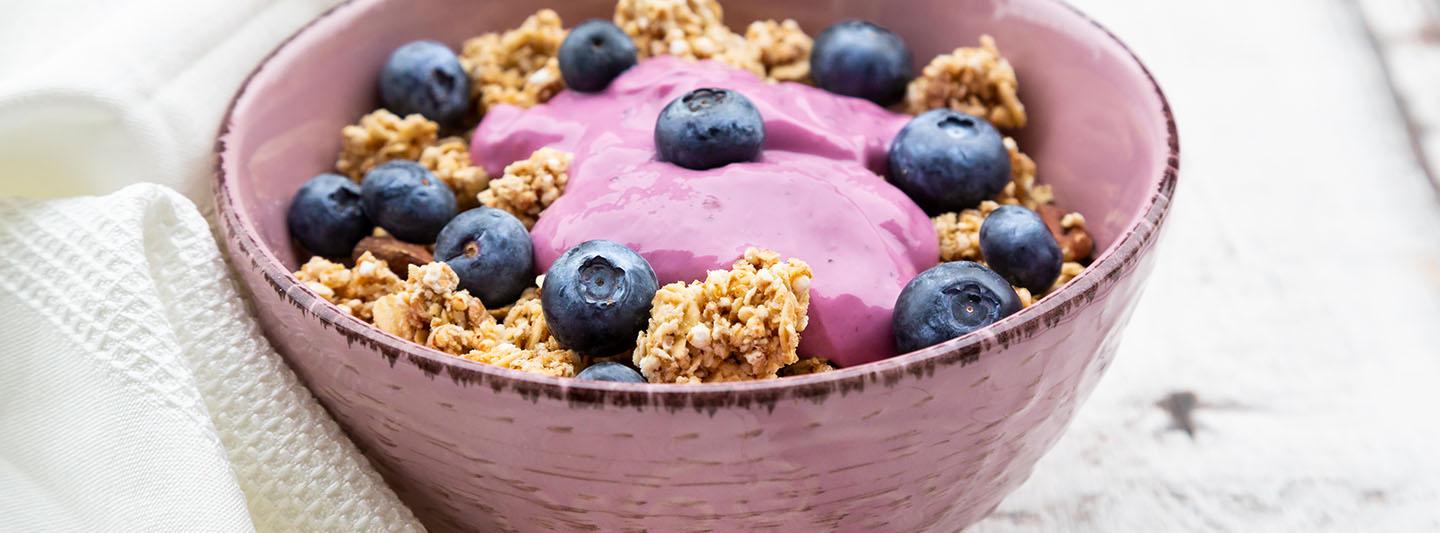How to avoid a glucose (blood sugar) spike
Certain lifestyle habits can help you avoid glucose (blood sugar) spikes, especially when it comes to meals. Learn more about eight habits you can try.
Christina Stiehl,
Managing Editor
Andrea Givens, MS, RD, CSSD,
Medical Affairs
Published:
December 13, 2024
Updated:
August 13, 2025
Read time:
6 minutes

You may be familiar with blood sugar spikes, or glucose spikes, and how they’ve made you feel. If you’ve eaten something carb-heavy without any protein or healthy fats, such as a doughnut or bowl of pretzels, you may have experienced the tell-tale signs of a glucose spike followed by a crash: irritability, sluggishness, hunger, thirst, cravings, and brain fog.
While these symptoms are unpleasant in the moment, you may not be aware of the further health implications of frequent glucose spikes, both in the short term and long term.
Fortunately, you can avoid or lessen glucose spikes thanks to various lifestyle habits. We’ve outlined eight ways to mitigate glucose spikes both in the moment and habits to build for long-term wellbeing.
Please note that these tips are for otherwise metabolically healthy individuals and not intended for those with diabetes or other metabolic conditions that require medical interventions. If you’re concerned about your glucose levels, please speak with your doctor.
Glucose spikes, also known as blood sugar spikes, are a marked rise in the amount of glucose in your blood. This can lead to negative health consequences if they occur frequently.
While every person has a unique glucose response to food, there are ways to limit glucose spikes on your own in otherwise metabolically healthy individuals.
We’ve outlined eight lifestyle habits you can implement to avoid glucose spikes and stay steady.
Start Lingo today for just £59
Learn how your body responds to food and exercise with a 2-week plan*, no commitment.
Buy now
What is a glucose spike?
After you eat, your body gets to work breaking down the food and drink to be used for energy or stored for later use. Carbohydrates specifically are broken down into glucose, which is circulated in your bloodstream. When the amount of glucose in the blood rises to a level that is higher than what is needed for energy, this is called a glucose spike or blood sugar spike.
While it is normal for your glucose to rise and fall many times throughout the day, a true spike is different. It's a sharp, marked rise in the amount of glucose in your blood, typically followed by a comparable decline, also known as a crash.
Spikes most often occur after eating a large amount of carbohydrates and/or sugar, but can also be caused by stress, intense exercise, poor sleep, caffeine intake, certain medications, and other factors.1,2,3,4,5
Why you should avoid glucose spikes
Glucose spikes are normal and can occur even in healthy individuals. However, when these glucose spikes happen frequently and consistently, it can lead to negative health complications.
While you may be familiar with the unpleasant effects of a glucose spike followed by a crash — hunger, thirst, irritability, brain fog, increased cravings — you may not be aware of the long-term health implications of consistent glucose spikes.
Frequent glucose spikes can significantly impact the health of blood vessels and cells.6,7 When these spikes become chronic, it can set the stage for future metabolic dysfunction.
Elevated glucose increases your risk for developing insulin resistance, prediabetes, and type 2 diabetes.8 They can also cause inflammation and impact your blood vessels, which can lead to other health issues such as heart disease.9,10
In the short term, maintaining steady glucose levels can help you feel satiated, energised, and focused.
Limiting the number and size of glucose spikes that occur can help improve your overall wellbeing.9 Lingo is designed to help you learn about your glucose patterns and view your spikes. It provides real-time glucose data to help you understand how your habits impact your glucose and metabolic health.
Lingo may help you learn to limit the size and frequency spikes and make changes to improve your overall metabolic wellbeing, which can lead to more energy, better sleep, less hunger and cravings, and increased focus.9
How to avoid glucose spikes
There are many ways to manage your glucose naturally in otherwise metabolically healthy individuals. Here are eight habits that can help you avoid glucose spikes:
Limiting foods that cause spikes: These foods include refined carbohydrates, sugars, and sugar-sweetened beverages.11
Pairing a carb with a protein:12 Instead of eating “naked carbs” (that is, carbohydrates by themselves), create a balanced meal or snack with a carbohydrate, protein, and healthy fat, such as an apple with peanut butter or toast topped with eggs and avocado. When possible, try and eat the protein on your plate before digging into the carbs, or at a minimum, eat them together.13
Walking after eating: A brief 10-minute walk after eating could help prevent or lessen a glucose spike.14 In general, about 30 minutes of movement daily can help manage your glucose.15 If you can’t commit to 30 minutes at a time, try incorporating “exercise snacks” throughout the day — just three 10-minute walks or bursts of exercise before or after each meal add up.16
Eating more veggies and fibre: Leafy greens and non-starchy vegetables such as kale, spinach, broccoli, asparagus, and bell peppers contain fibre (a type of carbohydrate), which slows digestion and helps you feel fuller, longer.17,18 These veggies also pack important nutrients and phytochemicals. Other types of fibre such as that found in oats, peas, beans, barley, carrots, and citrus fruits can help slow the absorption of sugar to help improve blood glucose.19
Managing your stress: Increased stress can also spike your glucose, so managing stress is key. Try incorporating a stress-reducing activity into your day like yoga, meditation, journaling, or listening to calming music. In particular, mindfulness meditation has been proven to reduce stress levels20, and you can find guided meditations online or in an app — try starting with a few minutes a day to see how that impacts your stress levels.
Drinking enough water: Staying hydrated is crucial for overall wellbeing, including for metabolism and glucose control. As a general baseline guidance, it’s recommended for women to drink at least 2.7 litres of water a day, while men should aim for 3.7 litres.21 These needs may vary depending on individual factors such as activity, body size, environmental temperature, and more.
Limiting alcohol: Carb-heavy and sugary alcoholic beverages, such as beer, cocktails, and dessert wines can spike your glucose, so opt for something with less sugar like a spirit mixed with soda water or a dry wine. Drinking close to bedtime can interfere with your sleep, which may have a negative impact on glucose.22,23 Alcohol can also lower your inhibitions, which may lead you to reach for sugary and carb-heavy snacks.
Focusing on sleep: Getting a good night’s sleep as well as going to bed at an earlier time can help lessen glucose spikes in the morning. Research shows that no matter what you may eat at breakfast, a poor night's sleep leads to more elevated glucose following breakfast when compared to a night of good sleep.23 Create a nighttime routine that helps you wind down before bed.
A final note from Lingo
While you’re unlikely to avoid glucose spikes entirely, you can take steps to prevent or lessen spikes with a number of lifestyle habits and healthy choices. There are short-term and long-term health benefits to maintaining steady glucose, including improving your metabolic health and overall wellbeing.
As mentioned, Lingo can help you understand your habits and patterns and work towards limiting glucose spikes. However, Lingo is not designed to treat or diagnose any disease or illness. If you have medical questions or concerns regarding your glucose, please contact your doctor.
The Lingo system is not for medical use and intended for users 18 years and older. Lingo is not intended for diagnosis or management of any disease including diabetes.
The Lingo programme does not guarantee that everyone will achieve the same results as individual responses may vary. It is best to speak to your doctor for advice on starting any diet or exercise regime or if you have an eating disorder or a history of eating disorders.
© 2025 Abbott. All rights reserved. The biosensor shape and appearance, Lingo, and related brand marks are marks and/or designs of the Abbott group of companies in various territories. Other marks are the property of their respective owners.
ALB-01775
Published:
December 13, 2024
Updated:
August 13, 2025
Read time:
6 minutes


Christina Stiehl is the Managing Editor at Lingo. She graduated from the University of Missouri School of Journalism and has more than a decade of professional editorial experience in the health and wellness industry. Christina has written for top media publications including SELF, PS, Shape, Well+Good, Thrillist, and VICE before pivoting to leading content at health tech companies.


Andrea Givens MS, RD, CSSD, is a Senior Medical Affairs Specialist and Health Coach at Lingo. Andrea has a passion for empowering individuals to leverage their unique physiology to optimise performance and health. She’s been a registered dietitian since 2010 and has been a board-certified specialist in sports dietetics since 2017. She holds master's degrees in both nutrition science and exercise physiology from San Diego State University.
More to explore on the blog

5 surprising ‘health’ foods that can spike your glucose levels
People might label as these five foods as “healthy,” but they can spike your blood sugar levels. Plus, healthier choices you can make instead.
June 24, 2025|4 minutes

What is a glucose spike?
The causes, symptoms, effects, and how to manage them for better metabolic health.
December 09, 2024|10 minutes